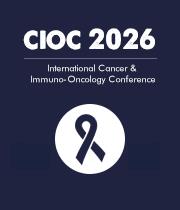Title : Cancer-associated fibroblasts derived soluble CADM1 predicts response to neoadjuvant chemoimmunotherapy in lung cancer
Abstract:
Conventional neoadjuvant chemotherapy offers limited benefit for patients with resectable non-small-cell lung cancer (NSCLC). Recently, neoadjuvant chemoimmunotherapy (NCIT) has transformed perioperative management of NSCLC by priming systemic anti-tumor immunity before surgery, leading to tumor downstaging. However, in real-world clinical settings, more than half of patients fail to respond to NCIT (non-MPR), with non-MPR status typically determined only at surgery via intraoperative pathology. There is a critical need for a fast and accurate method to identify non-MPR patients early in NCIT, which could provide an opportunity to adjust treatment regimens for better outcomes.
In this study, we found that the stromal cell signature is significantly correlated with worse overall survival (OS) in NSCLC patients receiving NCIT. To pinpoint the responsible stromal cells subclusters, we utilized digital spatial profiling (DSP) spatial transcriptomics to analyse SMA+ stromal cell-enriched perivascular structures in 16 patients from our NCIT cohort. Ecotyper deconvolution analysis revealed no significant differences in immune cells across different efficacy groups. However, COL11A1+ CAFs and SOX4+ endothelial cells were markedly upregulated in non-MPR patients, findings further confirmed by single-cell data from 24 NCIT specimens. Both CAFs and endothelial cells are key stromal cell types that contribute to tumor microvascular formation.
Subsequent multiplex immunofluorescence analysis of NSCLC tissues demonstrated that COL11A1+ CAFs and SOX4+ endothelial cells co-localize around tumor microvasculature. Cell communication analysis suggested that COL11A1+ CAFs interact with SOX4+ endothelial cells via the CADM1-CADM1 axis. To validate these findings, we built a biobank of CAF cell lines from 52 NCIT patients and conducted bulk RNA sequencing. COL11A1 and CADM1 were significantly upregulated in CAFs from non-MPR patients. Alternative splicing analysis (AS) further revealed that CAFs produce a soluble form of CADM1 (sCADM1) via AS, whereas endothelial and tumor cells only express membrane-bound CADM1. We then prospectively collected serum samples from 118 patients after their first dose of NCIT. ELISA profiling showed that serum sCADM1 levels could effectively predict non-MPR status (AUC: 0.84), which was further validated by western blot analysis in the CAF biobank.
In conclusion, we identified a novel CADM1-CADM1 interaction between COL11A1+ CAFs and SOX4+ endothelial cells as a hallmark of non-MPR in NCIT. Furthermore, soluble CADM1 derived from CAFs can serve as a promising early-stage biomarker for identifying non-MPR patients within 7 days of NCIT initiation. We propose that developing a sCADM1 detection kit could be a powerful tool for monitoring NCIT efficacy in clinical practice.



